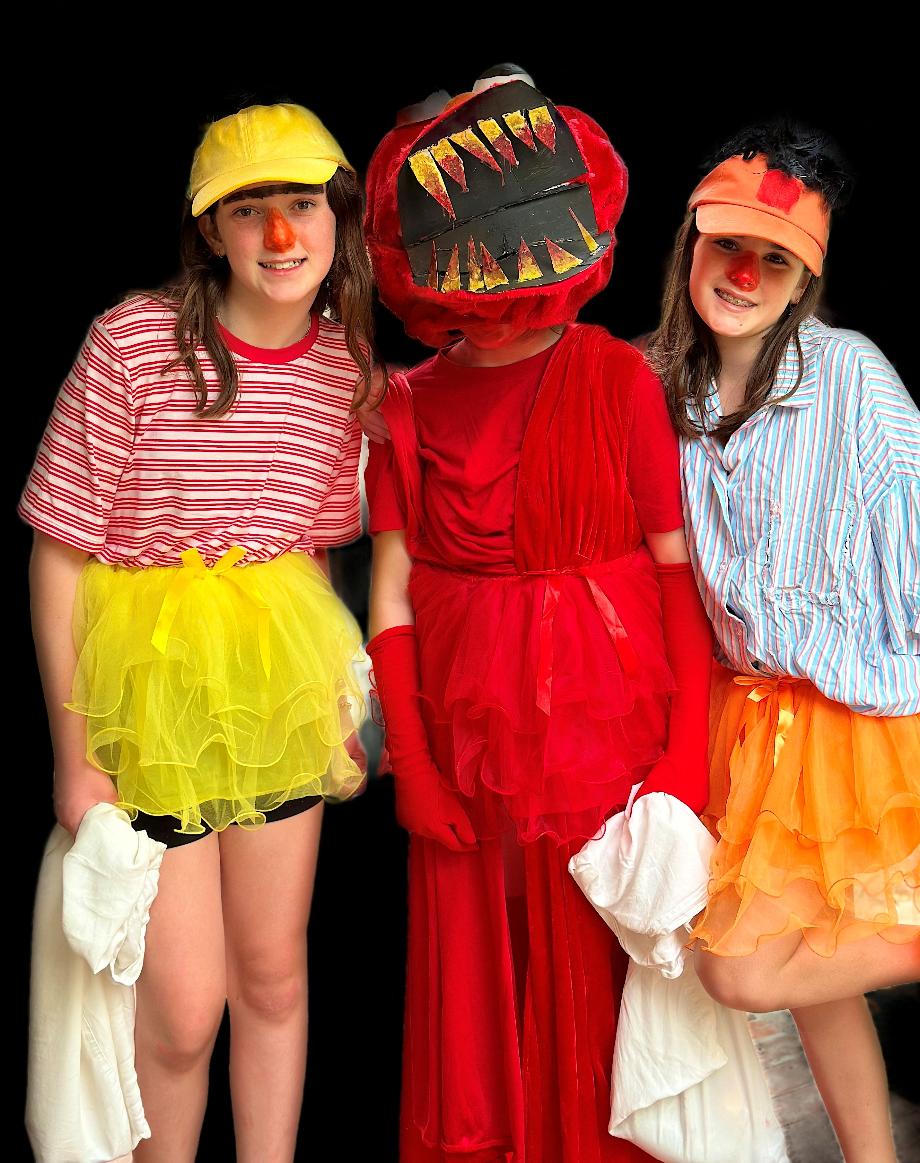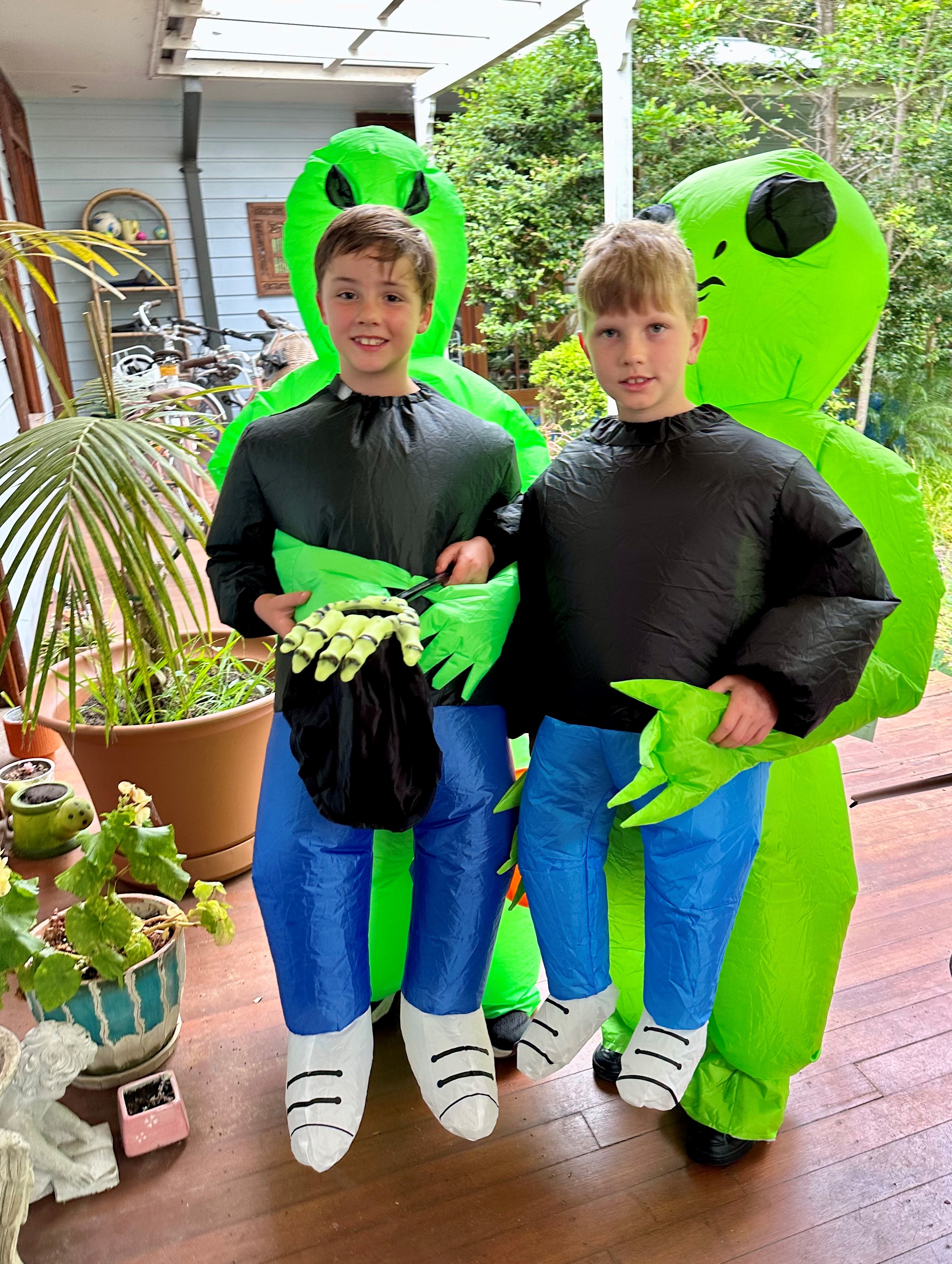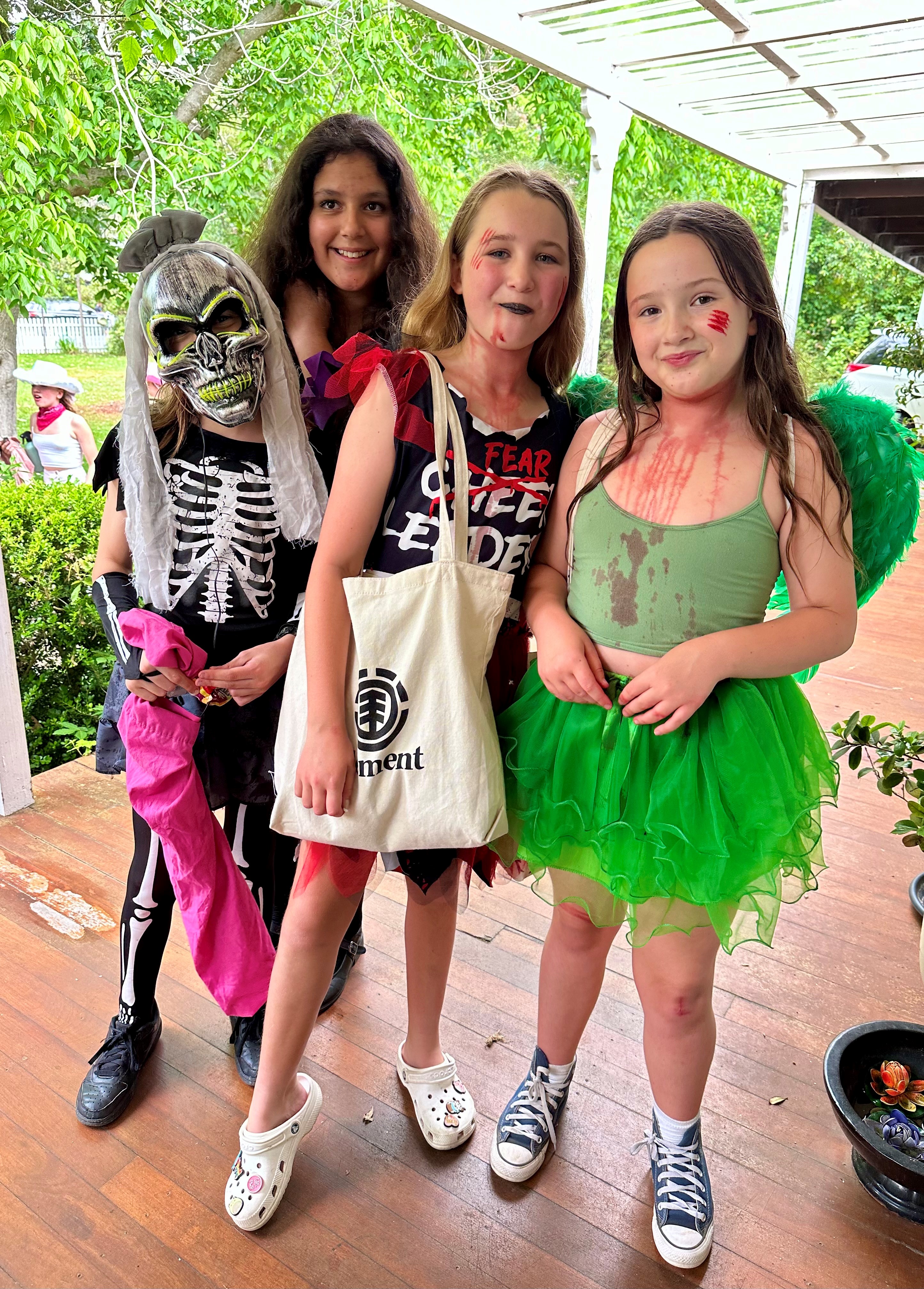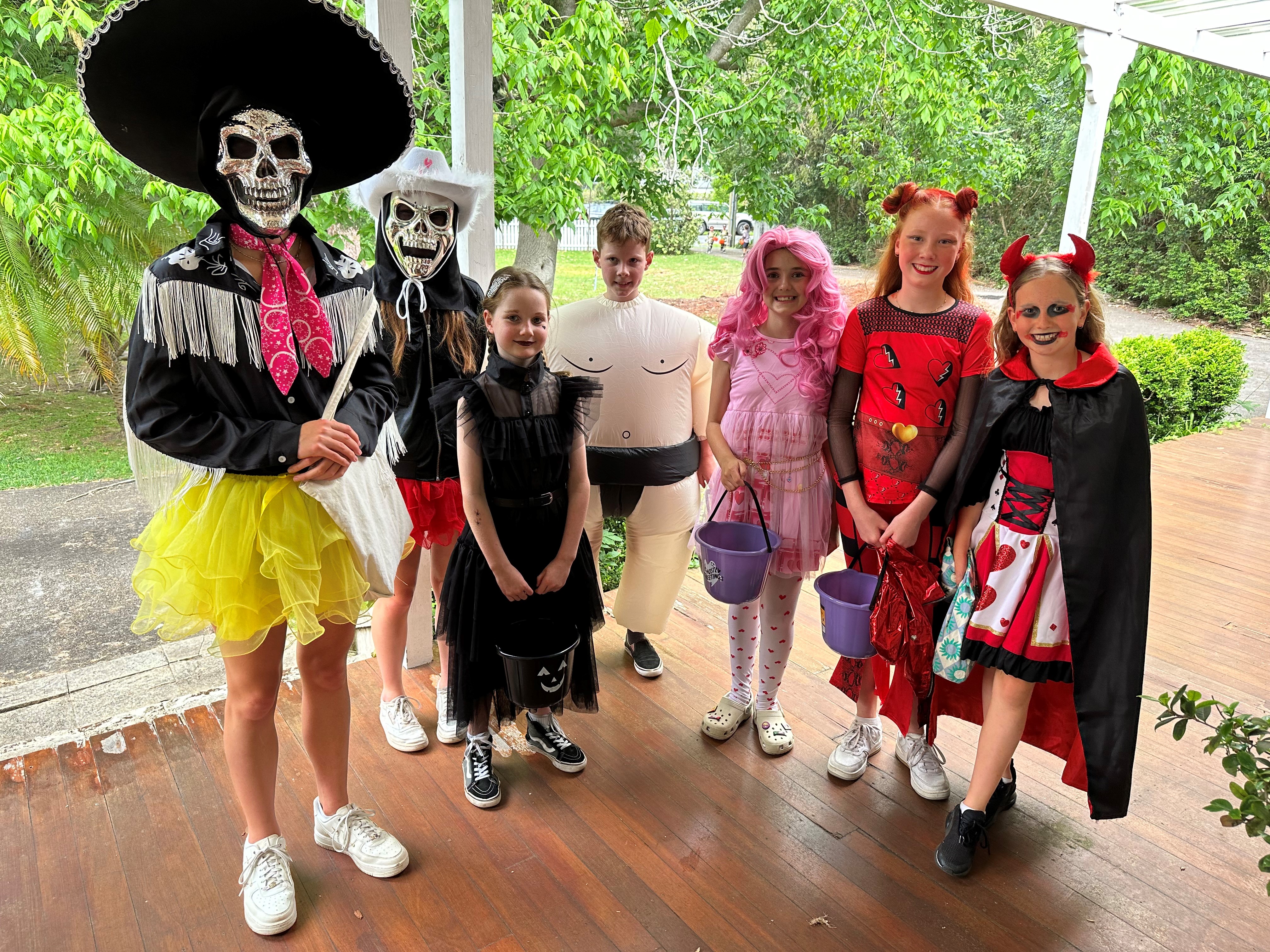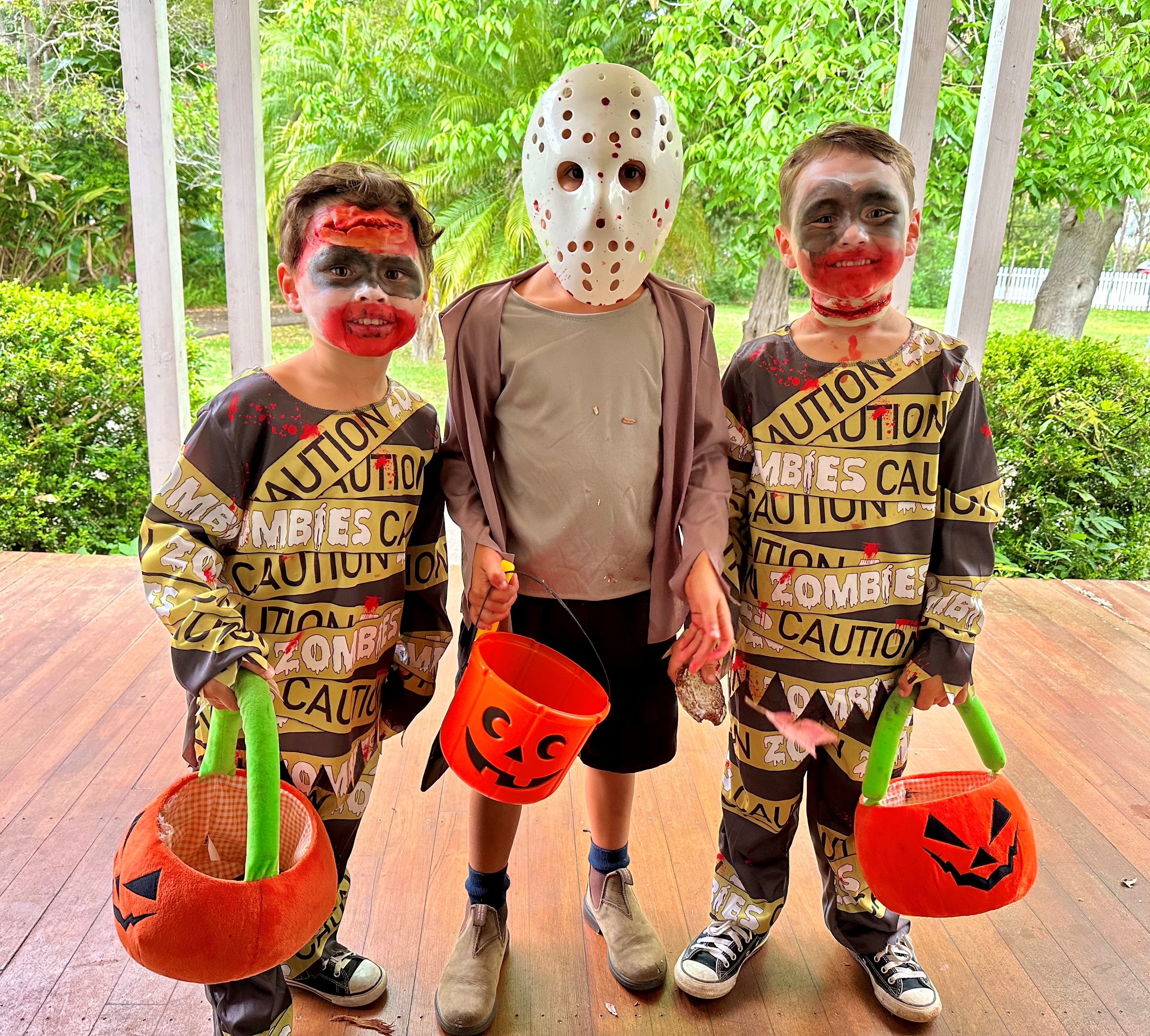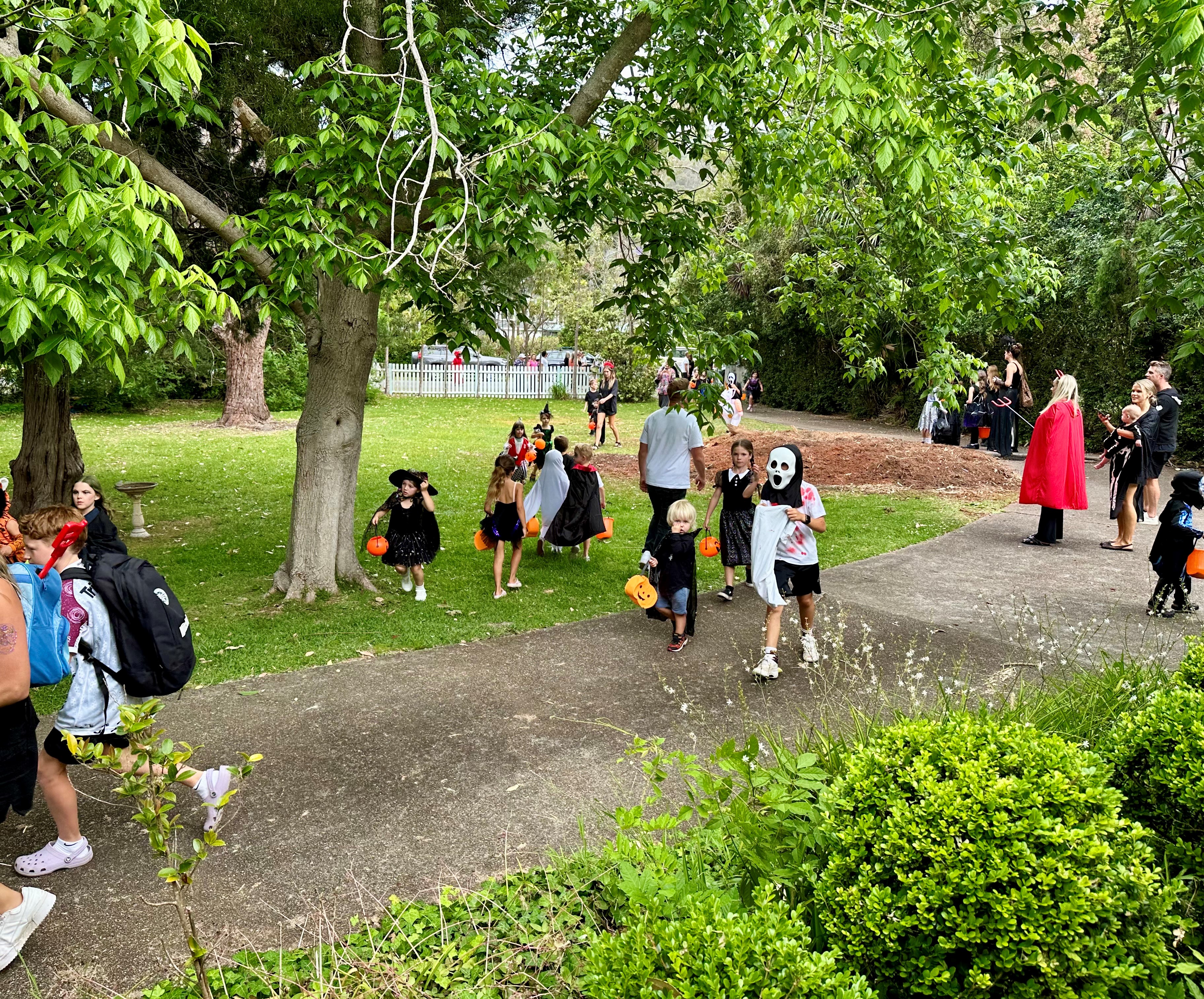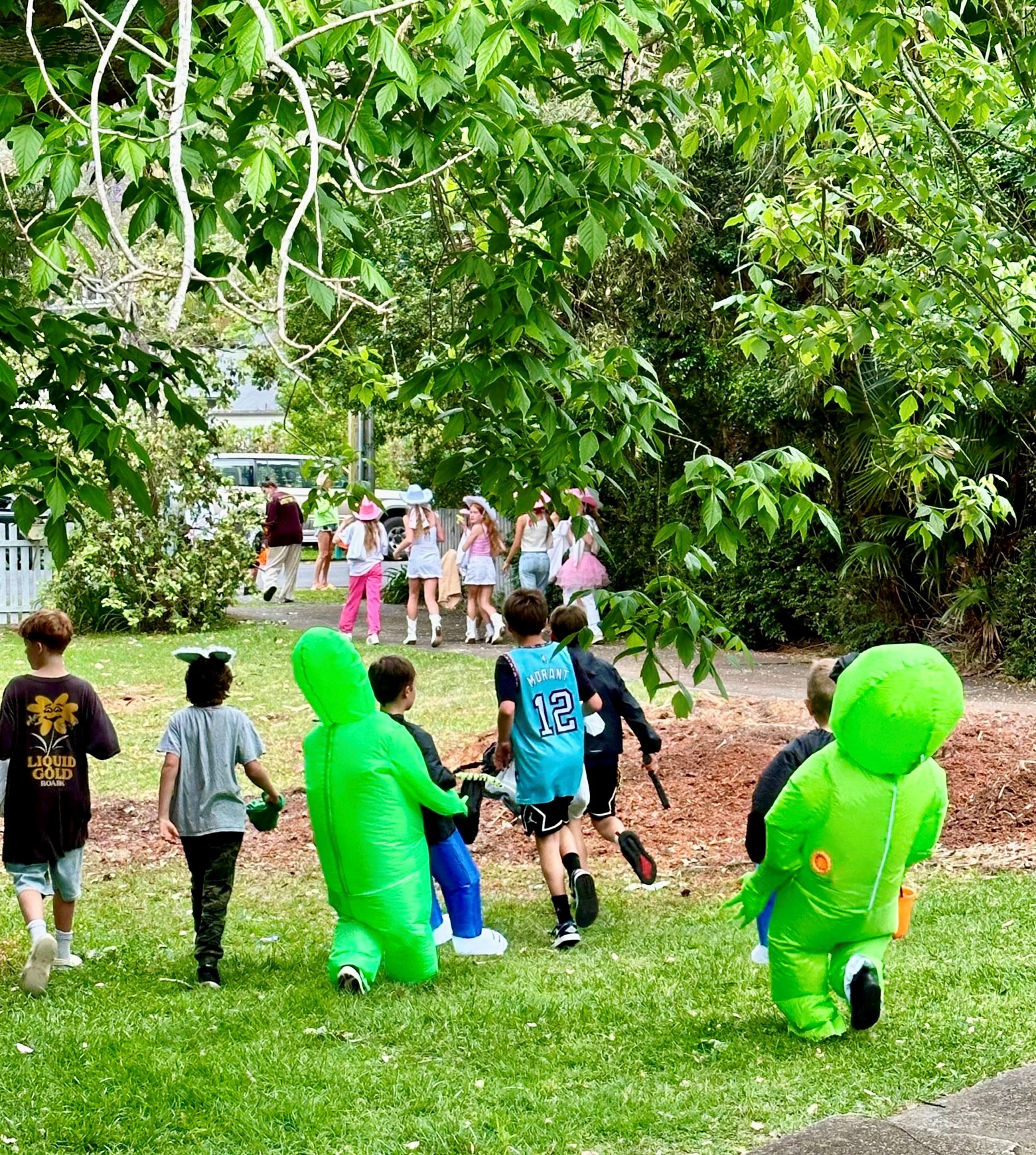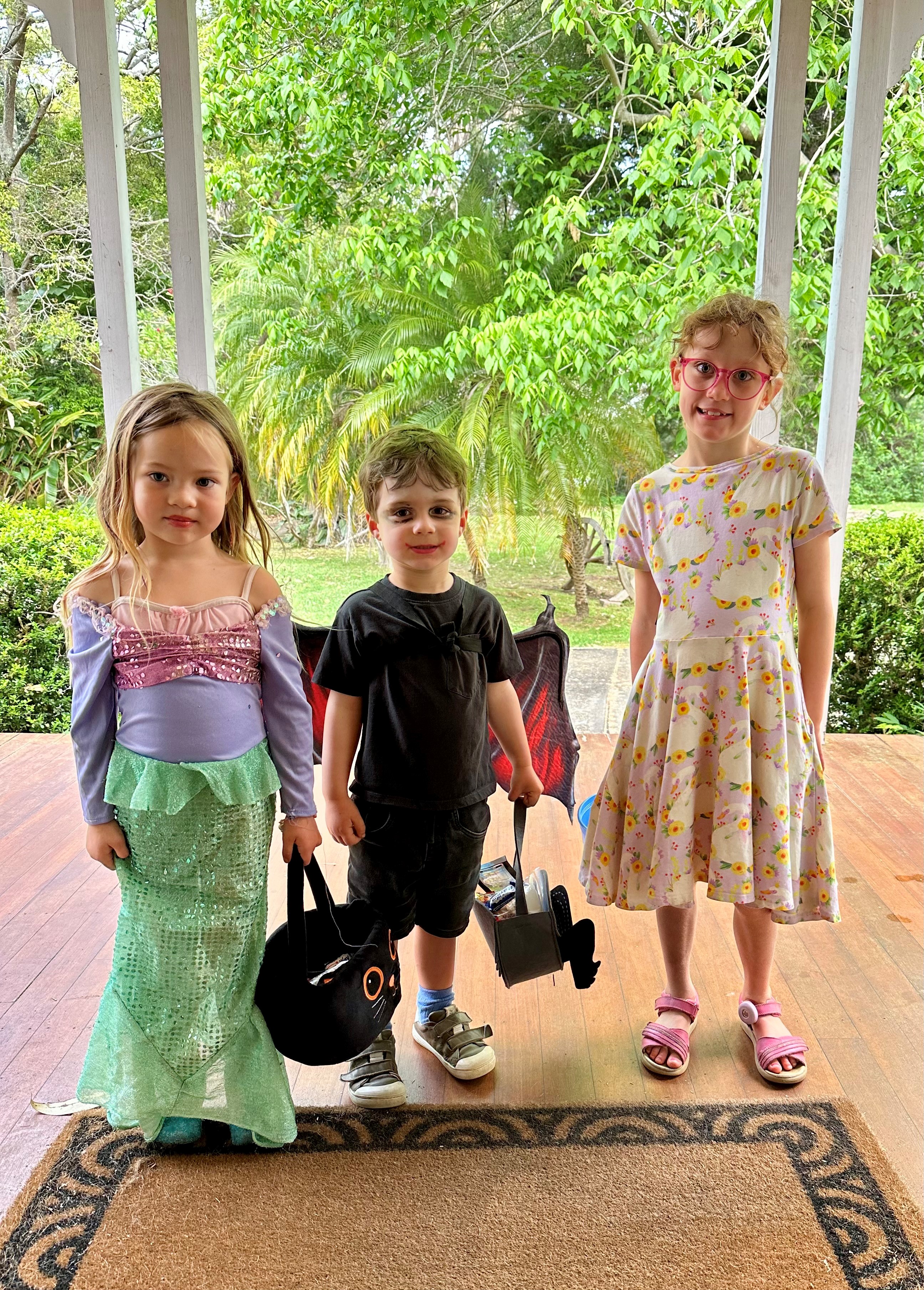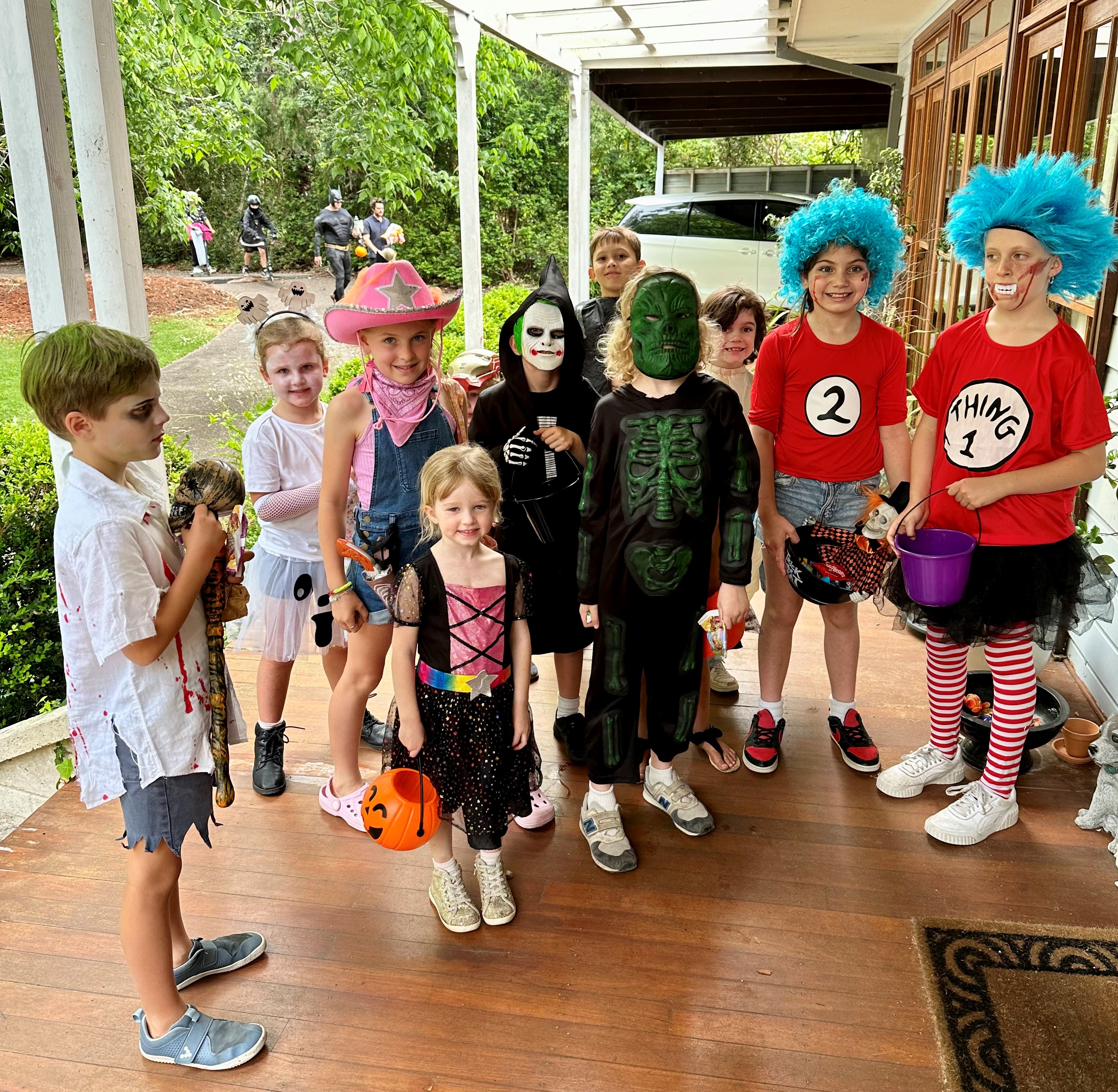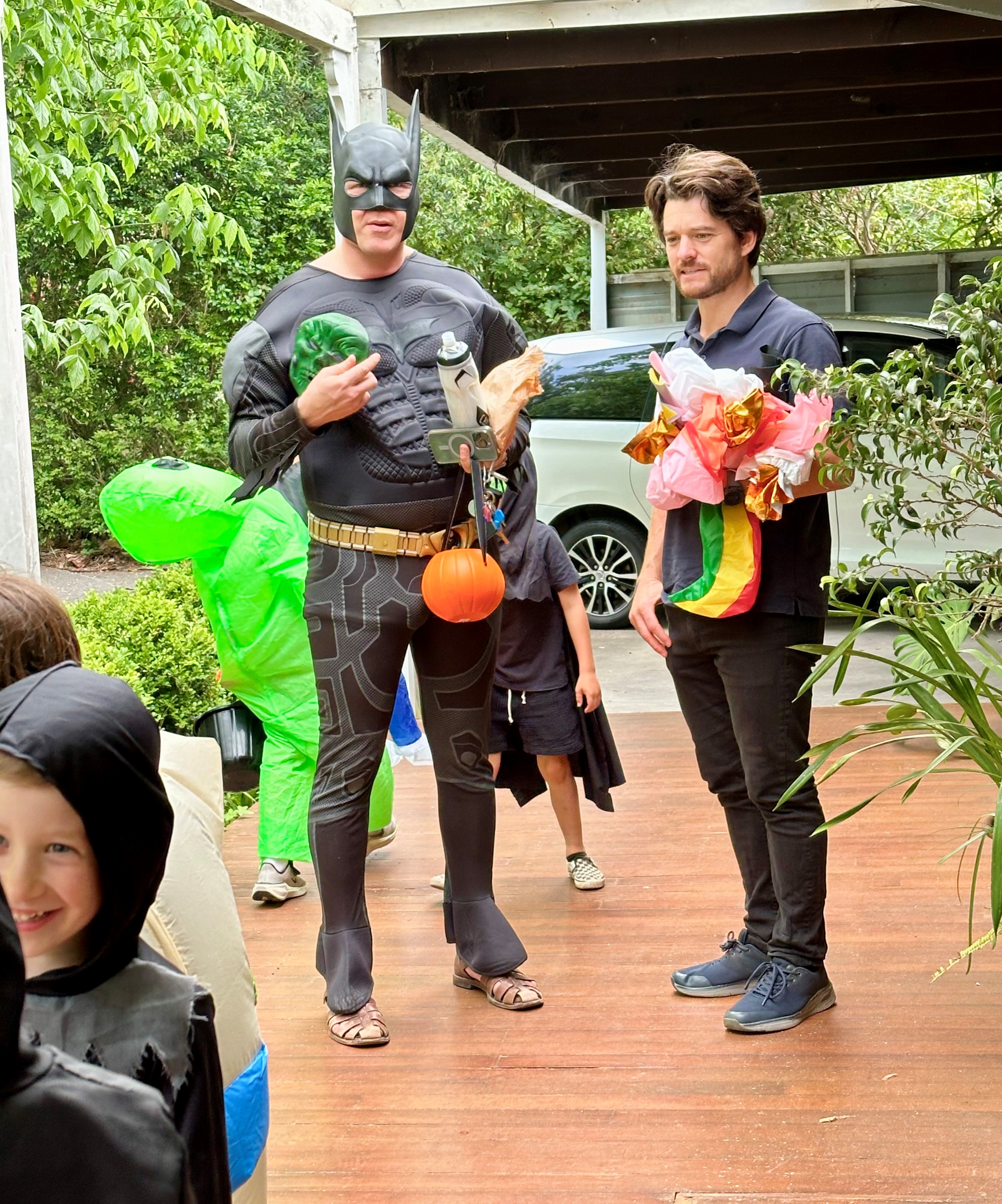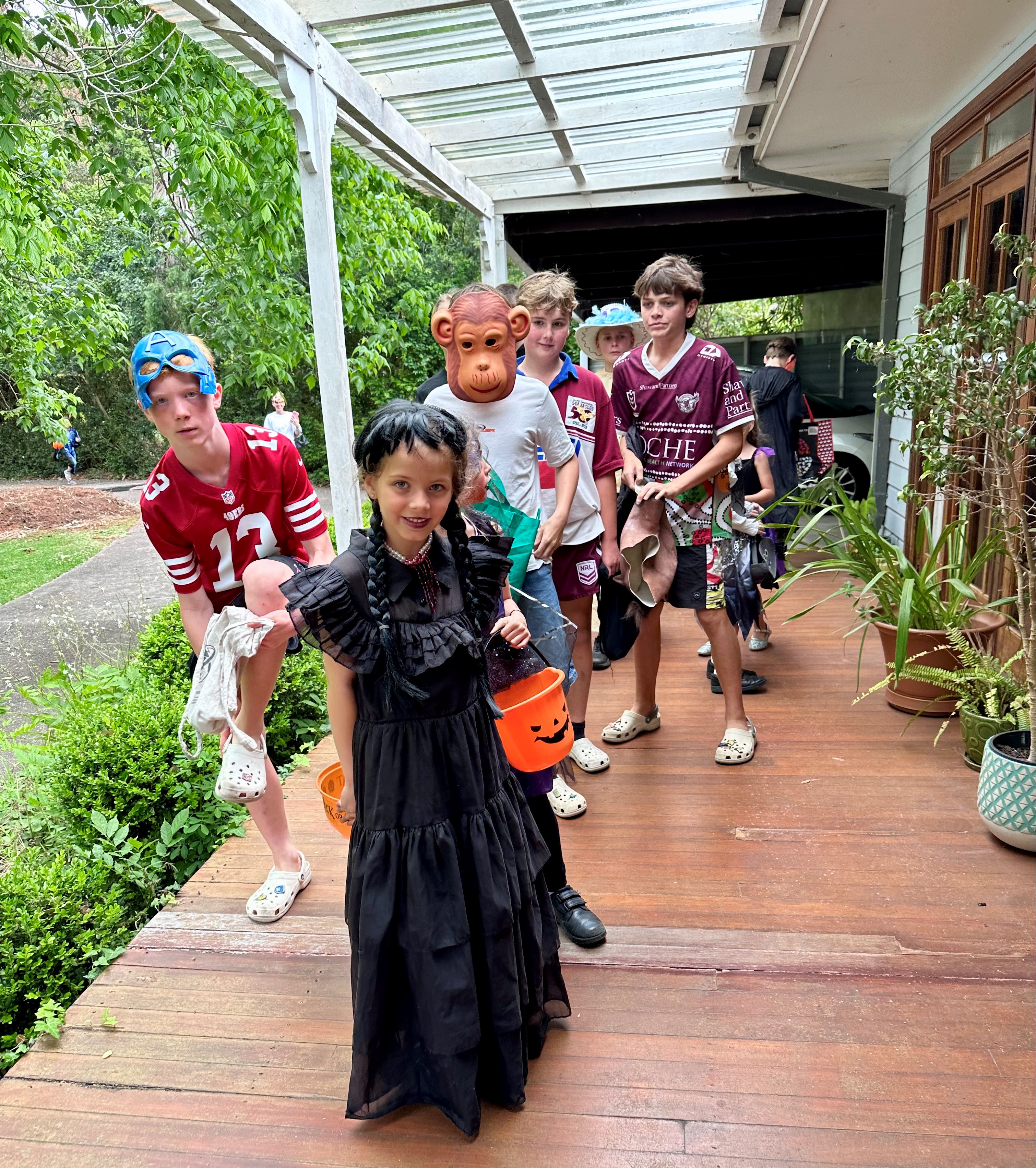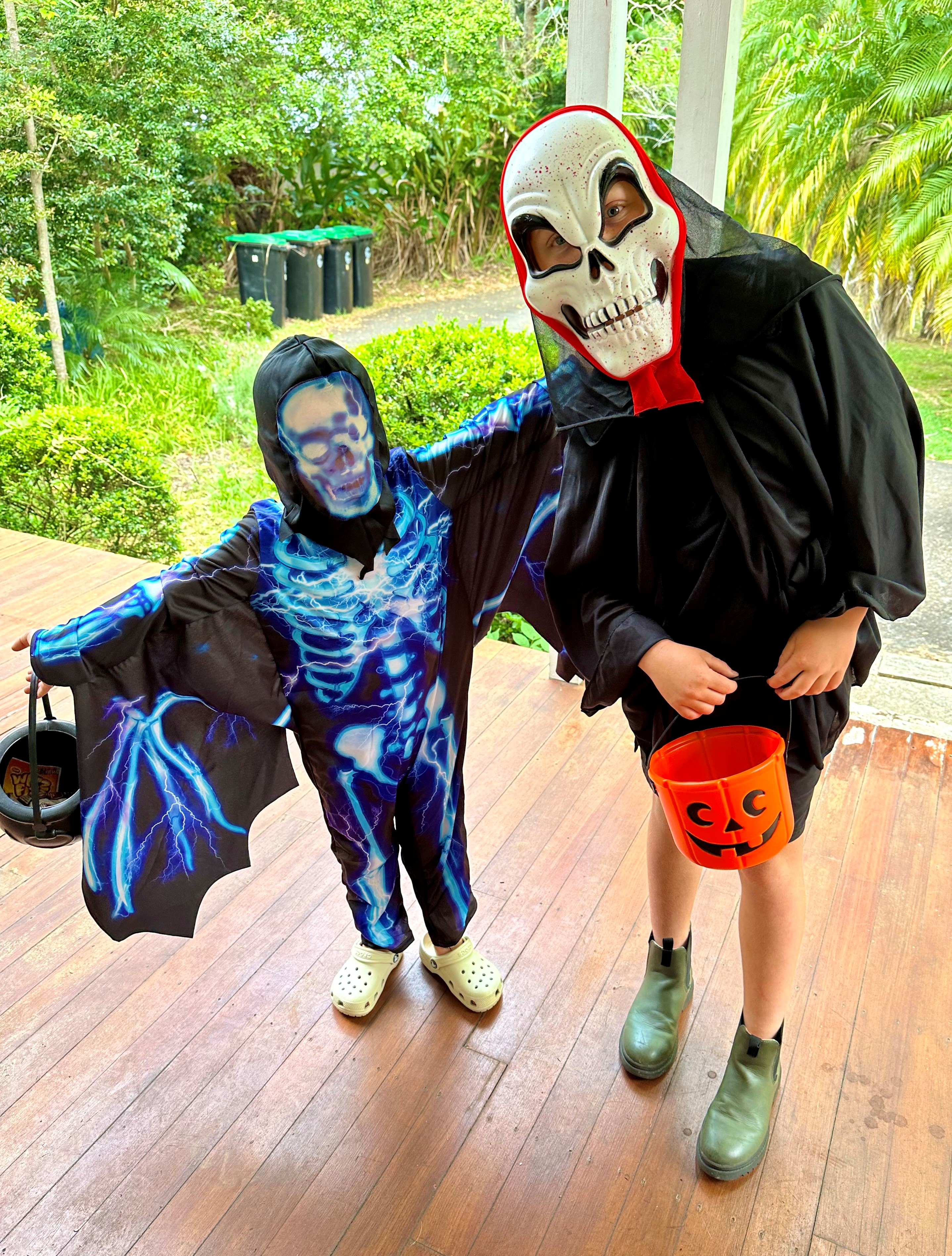October 28 - November 30, 2024: Issue 636
Halloween in Pittwater 2024 - some photos
by Joanne Seve
Joanne says; ''It was magnificent weather to welcome such diverse, wonderfully costumed and very polite groups of Trick or Treaters 😊🎃👻''
With so many people in Australia's multi-cultural society having Halloween as a part of their culture, and the 'treats' element always going to be attractive to youngsters, along with the great fun of dressing up, it's no surprise All Hallows Eve has become more and more popular in Pittwater.
Economists estimate around $450 million dollars has been spent in Australia this year on lollies, costumes and decorations to celebrate Halloween - a boon for local shops.
The Australian Retailers Association said many popular retailers are seeing increased sales of up to 20 per cent on Halloween merchandise, with department stores selling hundreds of thousands of costumes and tens of thousands of decorations so far.
This year there has also been a 25% rise in pumpkins being carved, and a noticed parallel jump in the price of the same. A whole pumpkin at the beginning of last week was around $7 - this jumped to over $12 and almost $20 on the Tuesday in certain supermarkets, much like petrol prices will rise as we all head into school and other holidays, although in July this year it was made known that pumpkin sourcing would be 'patchy' from then on, although PON staff members were buying whole ones for $4 then.
ARA CEO Paul Zahra says the Halloween tradition has a rich history that Australians enjoy celebrating.
“Halloween originated as a Celtic Festival from the United Kingdom where people lit fires and wore costumes to ward off ghosts,” Mr Zahra says.
“Over time, it’s evolved into a day of trick or treating, festive gatherings and donning costumes. It’s now a global phenomenon and a significant retail event.
“It’s also a fantastic day for families and friends to come together to celebrate. We know many parents enjoy trick or treating with their children, while adults get into the spirit by dressing up and hosting themed parties.”
Australian retailers will be enjoying the $450 million sugar hit from Halloween spending in 2024, with 38 per cent of Australians stocking up on 'candy' (lollies) for trick or treaters. 37 per cent will also be buying Halloween costumes, and 32 per cent will be buying chill-inducing home décor. ARA said 21 per cent of Australians said they are planning to celebrate, and of those participating, each person will spend an average of $93.
The top Halloween categories Australians will be spending on include:
- Trick or treating: 45 per cent
- Treats for trick or treaters: 38 per cent
- Halloween costumes: 37 per cent
- Home decorations: 32 per cent
- Attending or hosting: 18 per cent
Australians aged 35-59 are the most likely to celebrate Halloween (34%) followed closely by under 35s (25%). In Pittwater it is all the youngsters who have some great fun.
Halloween, or 'All Hallows Eve' is a celebration observed in many countries on 31 October, the eve of the Western Christian feast of All Hallows' Day, or All Saints Day. It is at the beginning of the observance of Allhallowtide, the time in the liturgical year dedicated to remembering the dead, including saints (hallows), martyrs, and all the faithful departed.
Many believe Halloween traditions were influenced by Celtic harvest festivals, particularly the pagan Gaelic festival Samhain observed on November 1 as the end of the Harvest Season. Others state Samhain may have been Christianised as All Hallow's Day, along with its eve, by the early Church. Some academics say Halloween began independently as a Christian holiday, being the vigil of All Hallow's Day.
Either way, originally it was celebrated in Ireland and Scotland for centuries, and when Irish and Scottish immigrants took many Halloween customs to North America in the 19th century, Halloween customs spread to other countries by the late 20th and early 21st century.
Popular activities during Halloween include trick-or-treating (or the related guising and souling), attending Halloween costume parties, carving pumpkins or turnips into jack-o'-lanterns, lighting bonfires, apple bobbing, divination games, playing pranks, visiting haunted attractions, telling frightening stories, and watching horror or Halloween-themed films.
Some people practice the Christian observances of All Hallows' Eve, including attending church services and lighting candles on the graves of the dead, although it is a secular celebration for others.
Some Christians historically abstained from meat on All Hallows' Eve, a tradition reflected in the eating of certain vegetarian foods on this vigil day, including apples, potato pancakes, and soul cakes (alike a shortbread cake with spices added).
The Day of the Dead, observed in Mexico, and a holiday traditionally celebrated on November 1 and 2, though other days, such as October 31 or November 6, and observed by many Australian residents from South American, is also held in the Christian period of Allhallowtide.
Day of the Dead also includes honouring the deceased using calaveras and marigold flowers known as cempazúchitl, building home altars called ofrendas with the favourite foods and beverages of the departed, and visiting graves with these items as gifts for the deceased. These places are lit brightly by the thousands visiting lost loved ones, with many candles placed on the gravestones.
The celebration is not solely focused on honouring the dead, as it is also common to give gifts to friends such as candy sugar skulls, to share traditional pan de muerto with family and friends, and to write light-hearted and often irreverent verses in the form of mock epitaphs dedicated to living friends and acquaintances, a literary form known as calaveras literarias.
Samain or Samuin was the name of the festival (feis) marking the beginning of winter in Gaelic Ireland. It is attested in the earliest Old Irish literature, which dates from the 9th century onward. It was one of four Gaelic seasonal festivals: Samhain (~1 November), Imbolc (~1 February), Bealtaine (~1 May), and Lughnasa (~1 August).
In Modern Irish and Scottish Gaelic the name is Samhain, while the traditional Manx Gaelic name is Sauin. Linguists Xavier Delamarre and Ranko Matasović derive it from proto-Celtic samoni ('reunion, assembly'), cognate with Old Norse saman, Gothic samana and Sanskrit samāná, all of which mean 'together'.
Samhain was when cattle were brought down from the summer pastures , was marked by great gatherings and feasts and was when the ancient burial mounds were open - which were close by to villages then with people often spending time at the places were loved ones had been placed.
The souls of dead kin were also thought to revisit their homes seeking hospitality, and a place was set at the table for them during a meal; just as this tradition continues in some homes even today - we set a place for a recently lost loved one at the table during family gatherings, such as Christmas. 'Mumming' and 'guising' were part of the festival from at least the early modern era, whereby people went door-to-door in costume, reciting verses in exchange for food.
The Ghost Festival is a Buddhist-Taoist holiday for the dead, celebrated in a number of Asian countries. Held every 14th or 15th day of the seventh month of the Chinese lunar calendar, it is believed that the gates of the underworld open and the spirits of the dead visit the earth during this time. Known as preta or “hungry ghosts,” they suffer from past misdeeds as well as the neglect of their descendants who do not make offerings to them.
During the Festival, people set out ancestor tablets or photos of ancestors in a shrine, then they make offerings of food, incense and prayers.
Japan's Obon Festival and Thailand's 'Por Tor' are also traditional, and very old, festivals honouring ancestors.
The Qingming Festival or Ching Ming Festival, also known as Tomb-Sweeping Day in English (also called Chinese Memorial Day, Ancestors' Day, the Clear Brightness Festival, or the Pure Brightness Festival), is an equivalent traditional festival observed by ethnic Chinese in mainland China, Hong Kong, Macau, Taiwan, Malaysia, Singapore, Cambodia, Indonesia, Philippines, Thailand, and Vietnam. A celebration of Spring, it falls on the first day of the fifth solar term (also called Qingming) of the traditional Chinese lunisolar calendar. This makes it the 15th day after the Spring Equinox, either 4, 5 or 6 April in a given year.
Here too Chinese families visit the tombs of their ancestors to clean the gravesites and make ritual offerings to their ancestors which include traditional food dishes and the burning of joss sticks and joss paper. The holiday recognises the traditional reverence of one's ancestors in Chinese culture.
Purim is a Jewish holiday that is sometimes called the "Jewish Halloween" . Purim involves exchanging gifts of food called mishloach manot. These gifts are typically fruit, desserts, and candy. Purim commemorates the saving of the Jewish people from annihilation at the hands of an official of the Achaemenid Empire named Haman, as it is recounted in the Book of Esther. Purim is celebrated among Jews by: Exchanging gifts of food and drink, known as mishloach manot; Donating charity to the poor, known as mattanot la-evyonim; Eating a celebratory meal with alcoholic beverages, known as se'udat Purim or "Mishteh"; Public recitation of the Scroll of Esther or "reading of the Megillah", usually in synagogue; Reciting additions to the daily prayers and the grace after meals, known as Al HaNissimand applying henna (Sephardic and Mizrahi Jews). Other customs include wearing masks and costumes, public celebrations and parades
In Lebanon, Turkey, and Jordan, all countries of the Middle East celebrate a day called Eid Il Burbara, annually on December 4th. Eid Il burbara, or Saint Barbara day has been celebrated for many years in honor of the Christian saint and martyr Saint Barbara. Saint Barbara was known for disguising herself to elude the Romans from persecuting her. On December 4th in Lebanon, Turkey, and Jordan, children dress up in 'disguise' going from door to door.
So all of us have a connection to this in one way or another, whether it's through our cultural connections to honouring lost but never forgotten loved ones, or getting together with loved family members and friends, or simply because we love dancing about dressed up in costumes or have an eye that loves the colourful lollies to treat abiding sweet tooth.
Joanne's great photos show some of the fun and brilliant costumes worn this year.
Thank you Joanne, and to all the littlies, and the bigsters accompanying them, who shared their great fun costumes for this year's Halloween in Pittwater pictorial.
